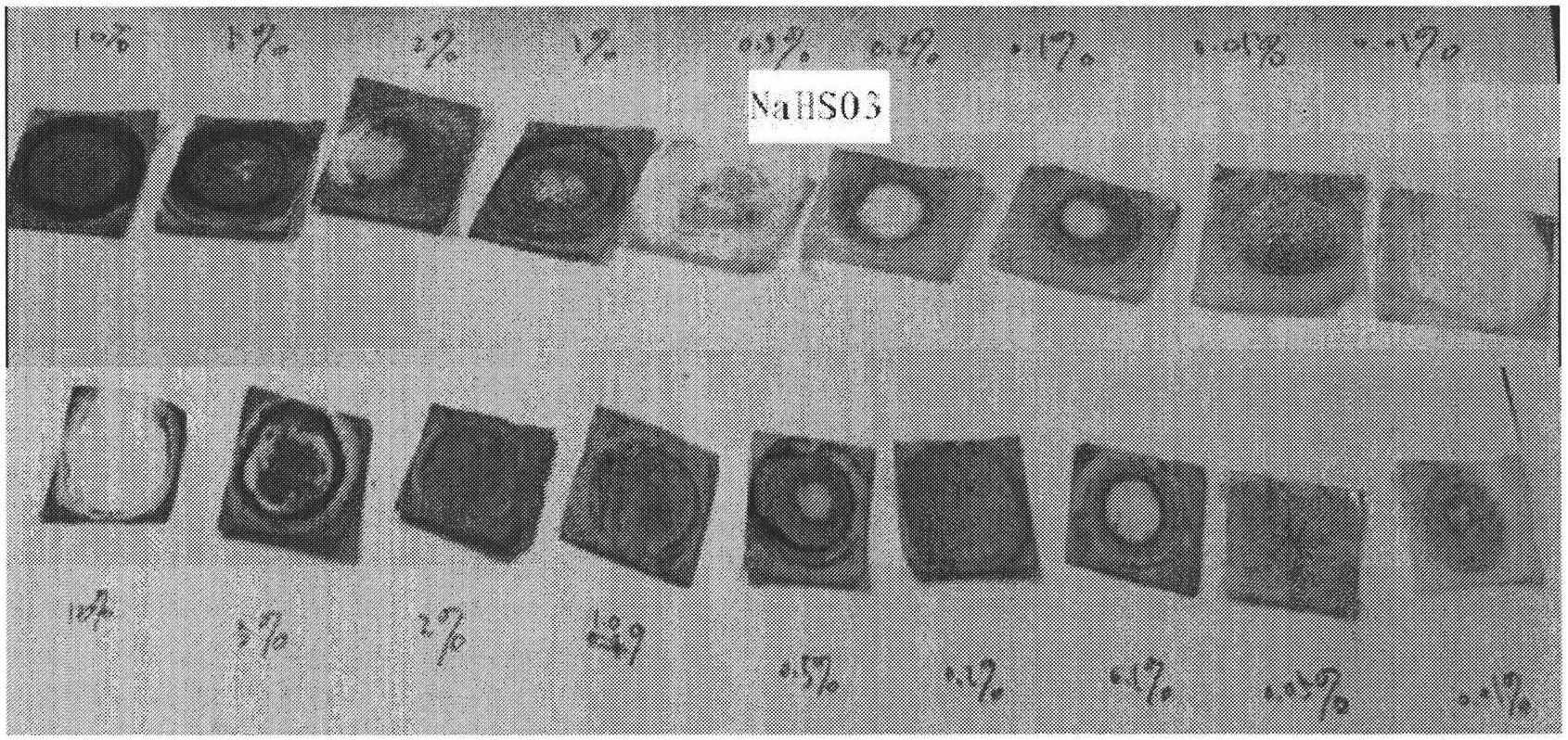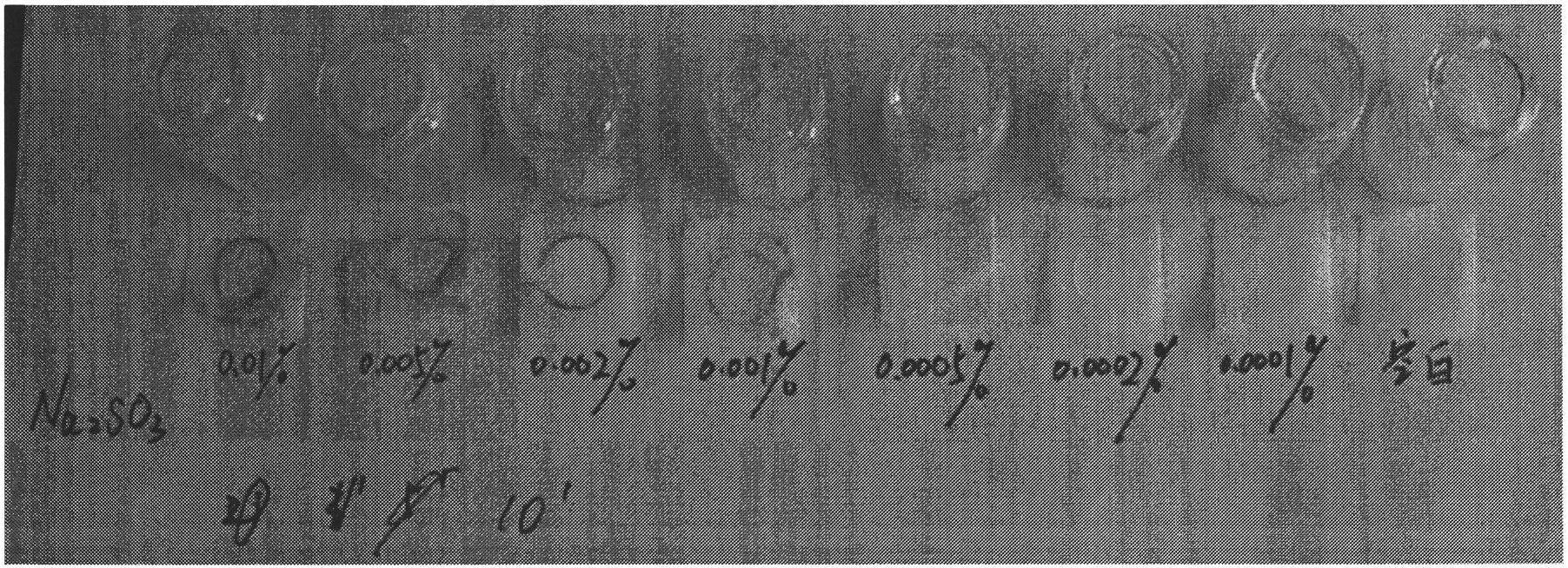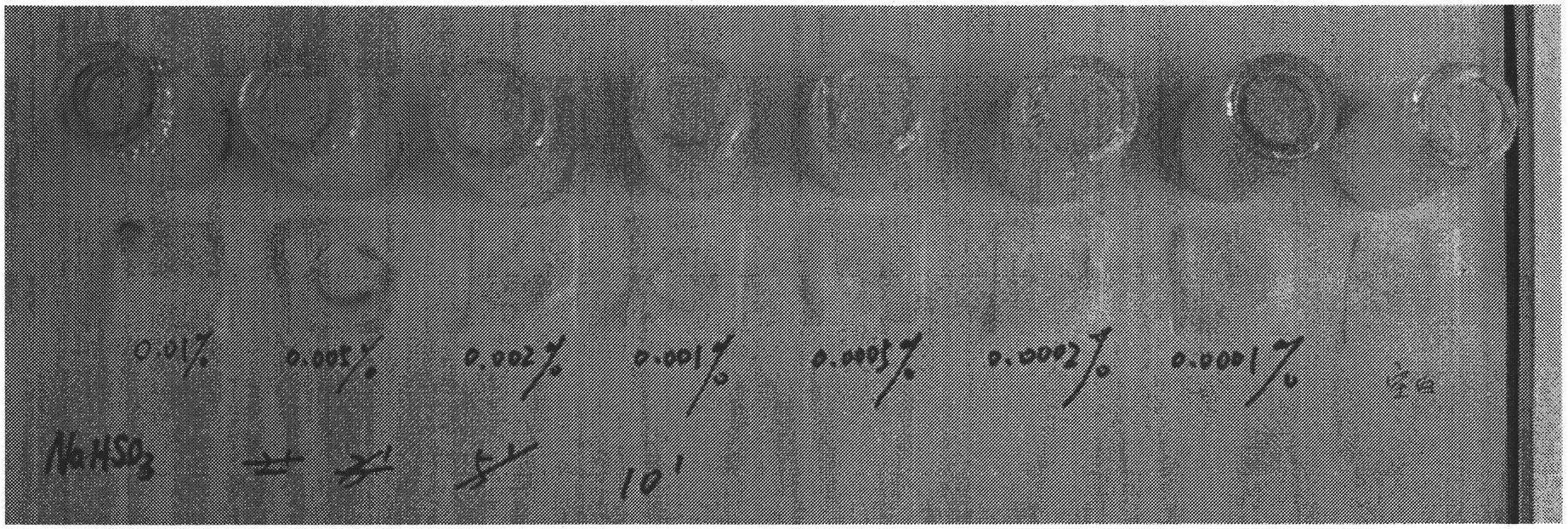Semi-quantitative detection method for residue of bleaching and coloring agents in traditional Chinese medicinal materials and traditional Chinese medicinal decoction pieces
A technology of semi-quantitative detection and traditional Chinese medicine decoction pieces, which is applied in the field of physical and chemical analysis of chemical substances, can solve the problems of high processing conditions for the toxic reagent tetrachloroamalgam, expensive equipment, and high requirements for the detection environment, and achieve the elimination of complex matrix interference, The effect of eliminating color background noise and shortening the detection time
- Summary
- Abstract
- Description
- Claims
- Application Information
AI Technical Summary
Problems solved by technology
Method used
Image
Examples
Embodiment 1
[0043] Embodiment 1: Utilize the method of the present invention to carry out the color reaction of standard substance
[0044] In this embodiment, sodium sulfite and sodium bisulfite are used as standard products. Take about 10 g of standard sodium sulfite and sodium bisulfite, put them in 100ml measuring bottles, add an appropriate amount of purified water or distilled water to dissolve and dilute to the mark, and use them as respective standard stock solutions.
[0045] Take the above stock solution and prepare the mass volume percentage concentration as 0.0001%, 0.0002%, 0.0005%, 0.001%, 0.002%, 0.005%, 0.01%, 0.02%, 0.05%, 0.1%, 0.2%, 0.5%, 1% , 2%, 5%, 10% and other standard solutions, and take 2ml respectively to carry out the color reaction according to the following steps:
[0046] (1) Sample processing
[0047] The sampling volume of Chinese herbal medicines and Chinese herbal medicine pieces is about 1g. Cut (or grind) the sample into fine particles with scissors...
Embodiment 2
[0053] Embodiment 2: Utilize the method of the present invention to carry out the color reaction of sample
[0054] First, prepare the test solution. Place the treated sample in a cecillin bottle filled with 10ml of 0.125% sodium hydroxide solution. The specification of the bottle is 15ml. Tighten the stopper, shake vigorously for 1-2 minutes, let stand for a while, and wait for the layers to separate. Take 2ml of the upper layer solution (filtered if necessary) as the test solution. A color reaction is then performed. Put 2ml of the above-mentioned test solution in a vial containing arsenic-free zinc pellets, wherein, the arsenic-free zinc pellets are 2-3, about 0.2g, the specification of the vial is 10ml, and then add 2ml of hydrochloric acid solution, Shake gently to make the mixture even, and immediately put the lead acetate test paper tightly on the mouth of the bottle. Final judgment result. If it turns yellow-brown to silver-black within 10 minutes, it can be judged...
Embodiment 3
[0055] Embodiment 3: the selection of filter paper
[0056] Select qualitative analysis filter paper, cut it into a circle with a diameter of about 2 cm (coinciding with the mouth of the vial), and soak it with lead acetate, copper acetate, copper sulfate and other test solutions respectively during the experiment before use. During the experiment, the above-mentioned prepared filter papers were respectively placed in the mouth of the cillin bottle for reaction, and the experimental results are shown in Figure 5 , Figure 5 After soaking the test paper with lead acetate, copper acetate and copper sulfate, it can detect 0.01%, 0.005%, 0.002%, 0.001%, 0.0005%, 0.0002%, 0.0001% Na 2 SO 3 and NaHSO 3 And graphs of experimental results with various samples. Depend on Figure 5 It can be seen that when the concentration is greater than 0.002%, both the sulfite standard solution and the sample can have a better color reaction. Therefore, according to the requirements of daily ...
PUM
| Property | Measurement | Unit |
|---|---|---|
| Diameter | aaaaa | aaaaa |
Abstract
Description
Claims
Application Information
 Login to View More
Login to View More - R&D
- Intellectual Property
- Life Sciences
- Materials
- Tech Scout
- Unparalleled Data Quality
- Higher Quality Content
- 60% Fewer Hallucinations
Browse by: Latest US Patents, China's latest patents, Technical Efficacy Thesaurus, Application Domain, Technology Topic, Popular Technical Reports.
© 2025 PatSnap. All rights reserved.Legal|Privacy policy|Modern Slavery Act Transparency Statement|Sitemap|About US| Contact US: help@patsnap.com



